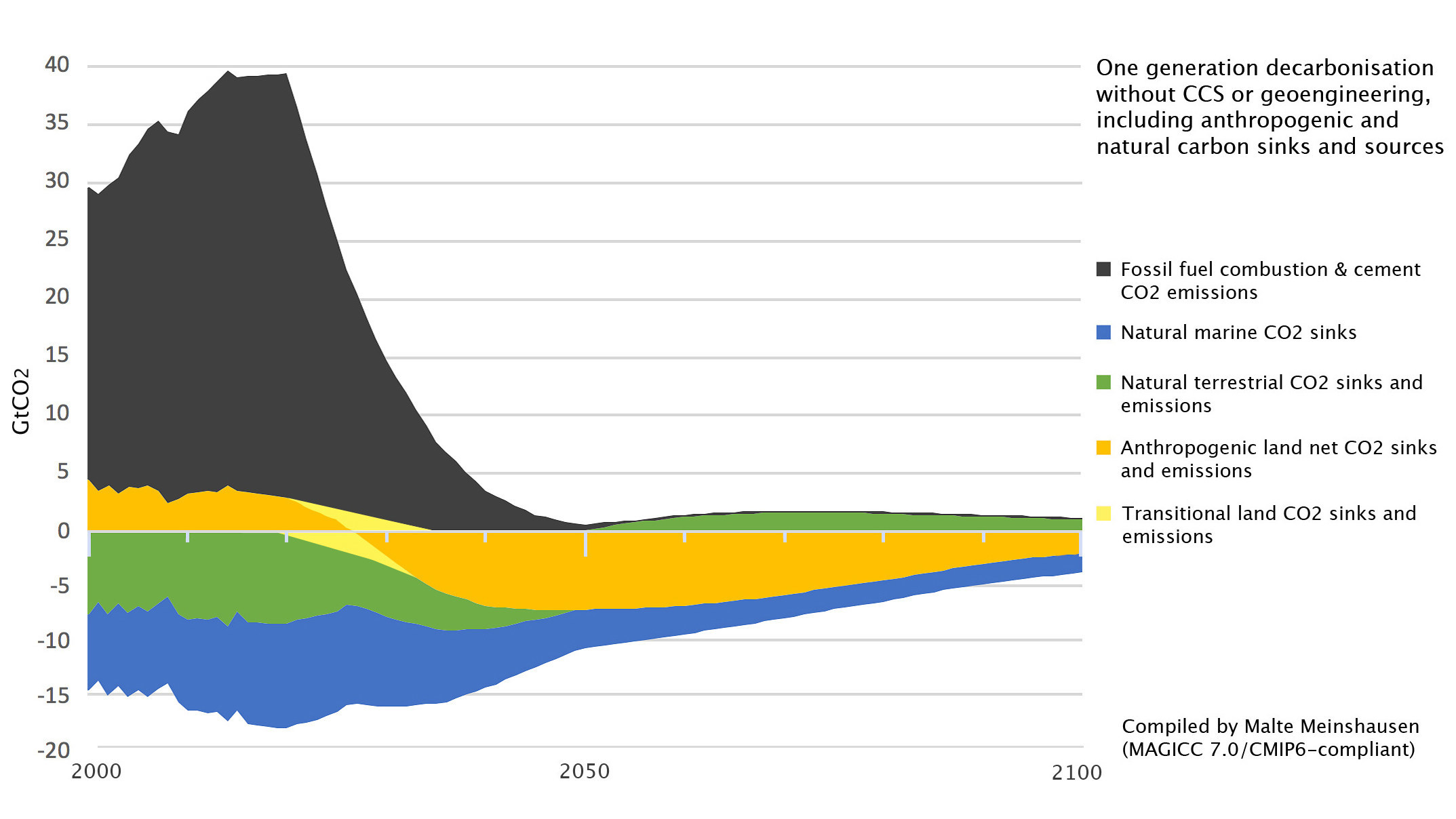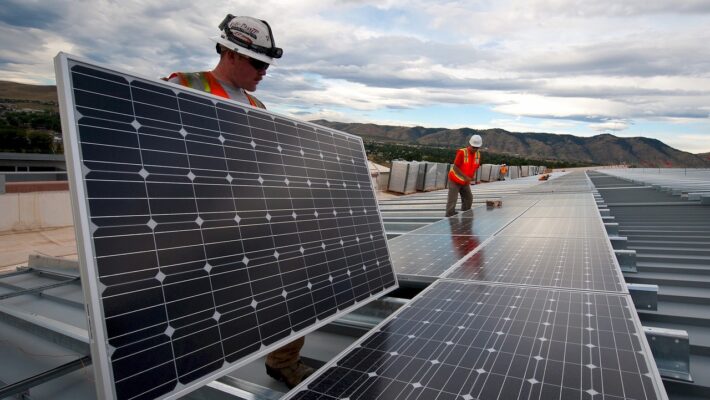“David Attenborough demands a global plan,” tweeted Dr. Sven Teske on January 24th, linking an article in Bustle. And, he adds, “we have got one.”
If the increasing doomsday atmosphere surround climate change has left you hopeless, take heart. Researchers at the University of Technology Sydney and the University of Melbourne have teamed up with the German Aerospace Center, one of the biggest federal research centers in Germany, to develop a plan that could save us all.
The One Earth Climate Model, funded by the Leonardo DiCaprio Foundation, uses the most detailed model of the world’s energy grids to date, and charts a course to keep us below a 1.5°C temperature boost. First we have to switch to 100 percent renewable energy. By 2050. All over the world.
Impossible? You might be surprised. When I asked Dr. Teske, lead author of the model, what the most surprising findings were during the two year research process, his answer was simple: “There are no economic and technical barriers to implement the plan,” he said. “The barriers are political.”
The Set Up: Bringing Together a Power Team to Research Global Energy
Teske is Research Director at the Institute for Sustainable Futures, University of Technology, Sydney. He holds a PhD in the integration of solar photovoltaic and wind into power systems, and he worked for 10 years as Greenpeace International’s Renewable Energy Director.
The One Earth Climate Model is only the most recent, and perhaps the most groundbreaking, of over 50 special reports he’s published on clean energy in his 20 year career in the market integration of renewable energy systems based on technical analysis.
He represented Greenpeace International’s renewable energy program at the UNFCCC Climate Conferences from 1994 to 2014, and he founded Greenpeace energy eG, the first green energy cooperative in Germany’s power sector. He continues as a member of the board, and Greenpeace energy eG now supplies 120,000 customers in Germany with clean energy.
For this research project, Teske teamed up with scientists at the University of Melbourne, who he acknowledges as “world leading in climate modelling and climate science.” They worked with the German Aerospace Center, who Teske says “has a track record of over 20 years of energy modelling,” and with whom he’s worked since 2004.
The Plan: Convince the World to Switch to Renewables and Restore the Land
The team’s research shows that a worldwide shift to renewable energy in the next few decades is necessary, but that alone won’t be enough. We rely on the oceans and forests to absorb half of the atmosphere’s carbon, known as “negative emissions.” So efforts in carbon reduction need to be bolstered with restoration of carbon-absorbing ecosystems.
The work is achievable. It’s a matter of convincing everyone—especially governments, oil companies, and oil-company-controlled-governments—to get on board. “There are no fundamental technical or economical barriers to an energy transition towards a carbon and nuclear free global energy supply,” Teske emphasizes. “Most current energy market frameworks and the involved energy industry are not in favour of such a transition.”
But some are. “Mainly small ones,” he says, like Costa Rica, Uruguay and Denmark. He notes that Germany has a law phasing out all 21 of its nuclear reactors by 2022. Last week they also reached an agreement to phase out coal by 2038. “This is still too slow, but it is a good start,” Teske says.
“Change of policy measures in favour of renewable energy and energy efficiency are required to overcome barriers.” If the world’s governments won’t do it, the report says, then, well…
…the death of the coral reefs in every ocean, the collapse of nearly one-quarter of the world’s agricultural land, dramatically increased heat waves and wildfires, 100 million driven to extreme poverty sparking multiple refugee crises; and more than $11 trillion per year in damages from extreme storms and flooding. Stacked upon each other, these impacts and many more, could undermine the very fabric of life on our planet, greatly challenging the continuation of human civilization as we currently know it.

One Earth’s Model requires the falloff in carbon emissions (gray), supported by a boost in land restoration (green) and cleaner oceans (blue) for stronger CO2 sinks.
How can we get coal-belching behemoths like China and the US, the latter who recently pulled out of the Paris Climate Agreement, to agree to the plan? It might not be such a hard sell after all.
The Sting: Getting Past the Political Barriers
Teske told me that China already has the world’s largest renewable energy market—by far. He says a full 50 percent of renewable energy systems built around the world last year were in China.
And renewable power plants, mostly solar and wind, had a market share of around 70 percent last year. “So 70 percent of all newly built power plants connected to the electricity grid in 2018 were renewables,” Teske says. “This is due to the fact that this is now the cheapest form of power generation.”
If big economic players aren’t compelled by environmental responsibility or the perpetuation of life on Earth, it has to make financial sense. And it does!
The Score: High ROI, More Jobs, and Trillions in Annual Savings
Because renewable energy doesn’t need fuel (with the exception of bio energy), Teske says the savings in fuel costs would refinance 90 percent of the investment costs required to build the infrastructure. It will support continued employment for the 30 million people currently working in energy, and will create an additional 12 million permanent jobs.
Governments currently spend around $5 trillion per year propping up fossil fuels. The energy transition proposed by the One Earth Climate Model will cost an estimated $1.7 trillion per year, resulting in considerable savings for the world’s governments.
For the first time, we have a climate solution that is feasible, marketable and lucrative, no matter what country you are.
The Future: We Have One Again!
The One Earth Climate Model was just published the book Achieving the Paris Climate Agreement Goals: Global and Regional 100% Renewable Energy Scenarios with Non-energy GHG Pathways for +1.5°C and +2°C.
Meanwhile, you can read its many fascinating and encouraging details here. And you can help by planting a tree, restoring whatever land happens to be around you, cleaning an ocean, and pressuring your lawmakers hard to commit to the proposed switch to renewables. If we’re all alive in 2051, we’ll breathe in a big lungful of fresh, carbonless air and exhale a ‘thank you’ to everyone who helped. Including climate researchers, policy makers, and you.
Clean EnergyClimate ChangeCO2 EmissionsLand RestorationOne Earth Climate ModelSven Teske




